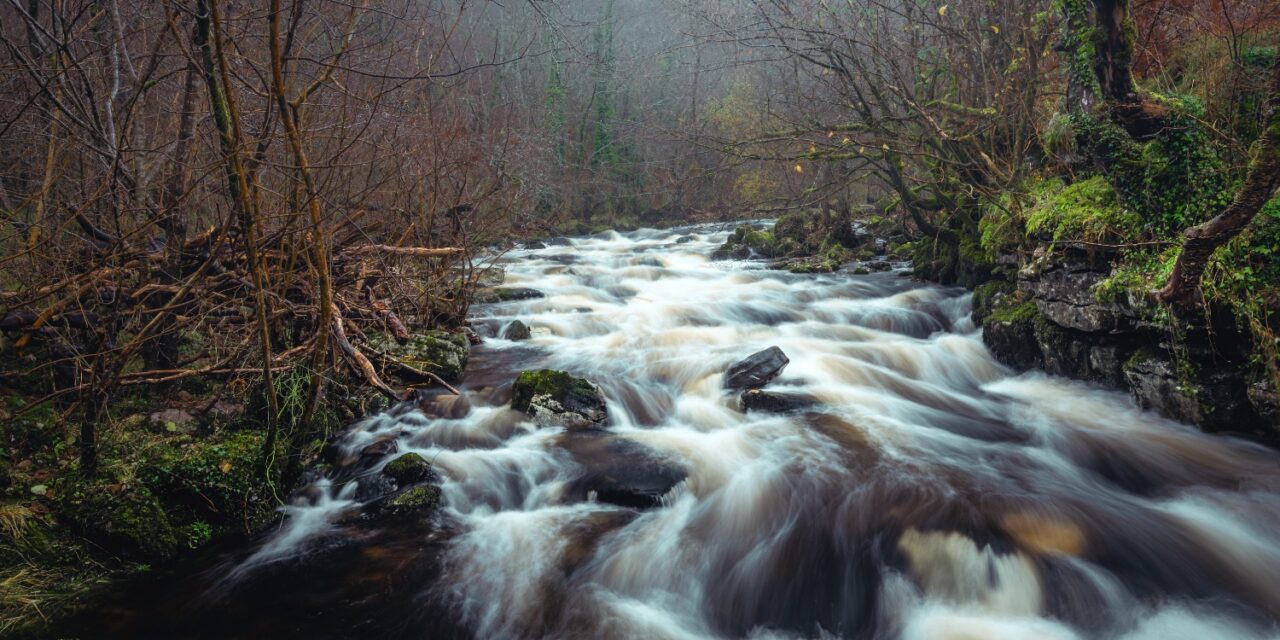One of the primary goals of the spiritual life is to journey toward being our fullest and truest selves. When we live out of our True Self, we find ourselves living and contributing to God’s dream for the world. In Ignatius’ Principle and Foundation we understand that our purpose in God is to “praise, reverence, and serve God”. In other words, to be in relationship with God and help build God’s kingdom. The Jesuits capture this sentiment in the Latin phrase ad majorem Dei gloriam (AMDG), for the greater glory of God. If I am doing things for this greater purpose, then I am following “God’s will“; I am also living out of my True Self.
 The Flow
The Flow
This means following the deep desires of the heart. These desires, Ignatius tells us, are the deep and good desires that propel our lives forward toward God. These have to do with our heart’s longings, our hopes and dreams, the gifts we’ve been given, our life’s circumstances, our talents… When we follow the desires that arise from these things, we find that they are aligned with God’s desires. When we use the gifts in our lives in ways that build God’s kingdom—contribute to God’s dream for the world—then we find ourselves in the flow of God’s will.
We’ve all experienced this flow when we’re in a moment of living out of our true selves. Maybe it’s when we’re working on a passion project or hiking in the woods or making love with our spouse or baking a cake or spending quality time with our kids. These are moments where we’re brought outside of our small egos and move towards God and neighbour. We’re in the flow of creative love.
Freedom in the Flow
Margaret Silf encourages us to ask, Are we being drawn or are we being driven? We’re in the flow when we’re naturally drawn to something, something that grabs us, and gives us energy. It’s when I find life accompanying someone in spiritual direction or learning a new song on the piano. What gives you life? These are life’s treasures. When you’re drawn into these life-giving things, you are in the flow. Silf says, “When I’m doing something out of love it feels effortless, there is freedom.” On the other hand, if you’re being driven into something it feels less natural and less you, it feels forced. It’s the difference between going down a water slide with water and with no water.
Bob Ross said, “Painting should be very free.” If you’ve watched any of his shows, you can see that he is in the flow when he is painting. There’s an ease in the sense that he is in the flow of his desires. He is using his God-given talents and creating out of love. This does not mean there is no challenge in his work. Saying yes to our deep desires does not guarantee no difficulty. It means that saying yes to the flow draws you through any challenges because your deep desires call you there. Jesus said his burden is light. There is a lightness when you’re in the flow of desire and love. It’s a flow that leads you to God.
Movement Toward God
You may still be asking, How do I know a desire is “of God”? Simple:
- What is the source and the destination? Is the desire coming from God and is it leading you toward God or others (i.e. outside of your ego). If these are both true, then the desire is of God.
- Is it life-giving? Does the desire energise you with life and help you grow into your True Self? Like a plant that grows toward a light source, does it help you grow toward God? Does it contribute something positive to God’s kingdom?
When we live into the flow, we are moving toward being the full human beings God made us to be. We hear God’s voice by listening to our life, our heart’s desires, our gifts, and our hopes and dreams.
Related posts:
- You Have No Purpose (In the Way that You Think)
- The Principle & Foundation: Ignatian Spirituality in a Nutshell
- Life’s Mirrors: 4 Ways to Deeper Self-Knowledge
Listen to the podcast version of this post…









Hey Andy, I just wanted to take a minute to let you know that I have being reading the posts on this site for a while now and am so thankful for all of them! I was raised in a Christian home but had numerous questions about my reformed protestant faith. Your posts have answered all my questions and more, everyday my faith becomes clearer and stronger and I am so grateful for the opportunity to find the answers to all of my questions, about God, love, faith, salvation, ego, relationships, the list is unending. I want especially to thank-you for the In The Flow posting as it was the first one I read and I was astounded to finally see some of the things I had thought and said in someone else’s words! I always told people I just tried to go with the flow, the difference is that now my vision of the flow has become broader spiritually and emotionally than I ever imagined. I thought it was only fair to let you know that your postings have helped to make a wonderful change in my life, as well as some of my friends. I also thought the posting from your Father-in-Law was amazing and helpful. May God continue to bless you, your family and your colleagues in the work you are doing. I read more than one of your posts everyday and always find an awesome message! Thank-you